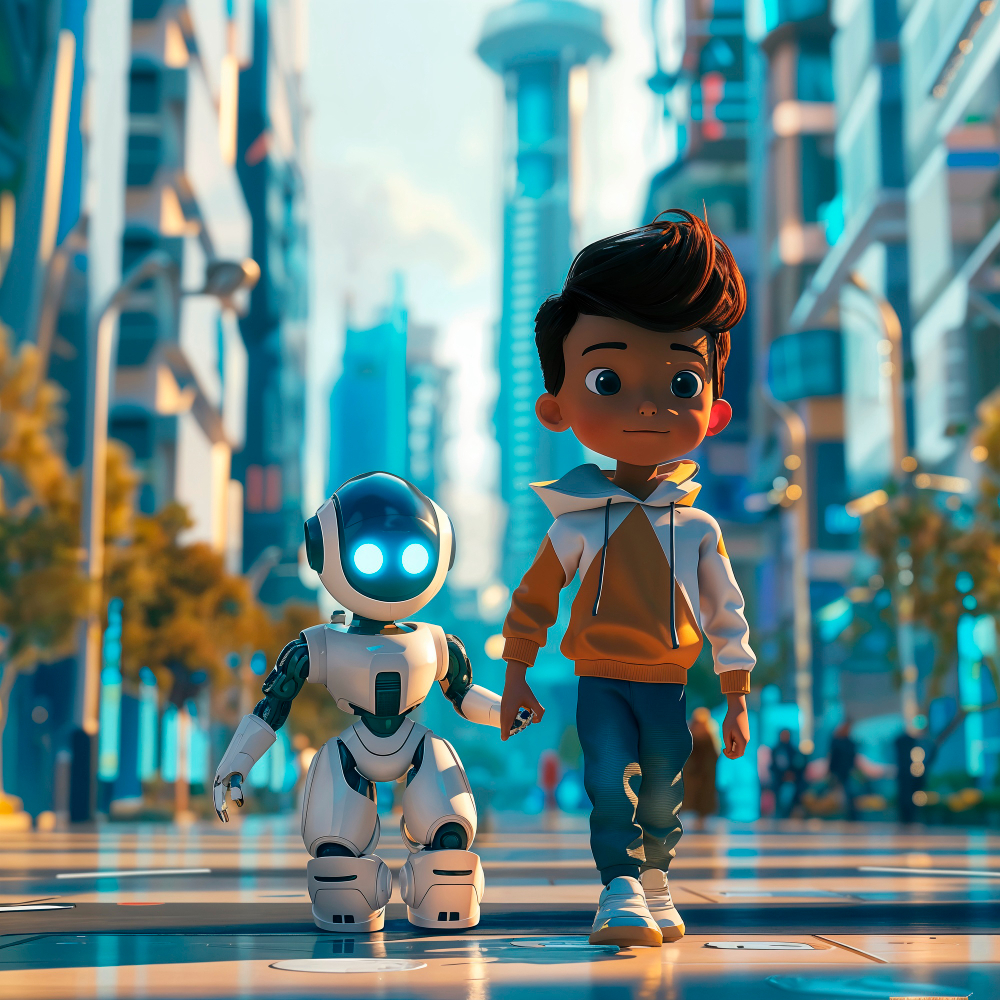Creating 3D animated characters for games and films can be a challenging yet rewarding process. Customizing these characters to fit the specific needs of your projects involves several steps, including the use of character rigs and various file formats like FBX and OBJ. In this guide, we will explore how to customize 3D animated characters for your projects in both games and films, touching on the essentials and providing tips to streamline your workflow.
Understanding 3D Animated Characters
3D animated characters are digital models that have been rigged and animated to move in a realistic or stylized manner. These characters are used in a variety of projects, from the sci fi-fi and fantasy films to video games and animated series. The customization of 3D characters involves adjusting their appearance, motion, and behavior to fit the specific aesthetic and functional requirements of your project.
The Importance of Character Rigs
Character rigs are the skeletons of 3D characters, consisting of bones and joints that control the movement and deformation of the character’s mesh. Rigging is a crucial step in the animation process, as it allows you to create realistic or exaggerated motions for your characters. Without a proper character rig, animating a 3D character would be incredibly difficult and time-consuming.
Types of Rigs for 3D Animated Characters
Basic Rigs: Suitable for simple animations where minimal movement and motion is required.
Advanced Rigs: Include more complex bone structures and controls, ideal for detailed and expressive animations.
Facial Rigs: Focus on the facial features of the character, allowing for nuanced expressions and lip-syncing.
Customizing 3D Animated Characters
Step 1: Choose Your Base Model
Start by selecting a base model for your character. There are thousands of free 3D models available online that you can use as a starting point. Websites like TurboSquid and CGTrader offer a vast collection of thousands of models in various formats, including FBX and OBJ.
Step 2: Adjusting the Mesh
Once you have your base model, you can begin customizing the character’s mesh. This involves modifying the shape and structure of the character to fit your project’s needs. Tools like Blender, Maya, and 3ds Max are commonly used for this purpose. Pay attention to the character’s proportions, as this will affect how they move and interact within your project.
Step 3: Applying Textures and Materials
Textures and materials give your 3D characters their final appearance. You can use image textures to create detailed skin, clothing, and accessories. Materials determine how the character’s surface interacts with light, adding realism to your animated characters. Experiment with a variety of different textures and materials to achieve the desired look for your sci-fi or fantasy character.
Step 4: Rigging the Character
After customizing the mesh, the next step is to rig and animate your character. Use a rigging tool to create a skeleton and bind it to the mesh. This allows you to animate the character by manipulating the bones and joints. For complex characters, consider using advanced rigs that offer more control over movements and expressions.
Step 5: Animating the Character
With the rig in place and ready, you can begin animating your character. This involves creating keyframes to define the motion and behavior of the character over time. Animation software like Blender, Maya, and Cinema 4D are excellent tools for this task. Focus on creating smooth and natural movements that enhance the character’s personality and fit the style of your film or game.
Integrating 3D Characters into Your Projects
Games
In video games, 3D characters need to be interactive and responsive to player inputs. This requires integrating the character animations with the game engine, such as Unity or Unreal Engine. These engines support various file formats, including FBX and OBJ, making it easy to import and animate your 3d characters together. Ensure that your character rigs are optimized for performance to maintain smooth gameplay.
Films
For films, 3D animated characters are typically integrated into scenes using compositing software. This involves matching the lighting and camera angles of the 3D character with the live-action footage or other 3D film elements. The goal is to create a seamless blend that makes the character appear as part of the scene. Pay attention to details like shadows and reflections to enhance realism.

Tips for Successful Customization
Start Simple: Start with a basic character model and gradually add details. This approach helps you understand the animation process without feeling overwhelmed.
Use References: Look at real-world examples or use other 3D characters to guide your design and animation choices.
Experiment with Tools: Different software tools offer various features. Experiment with a few to find the ones that best suit your workflow.
Seek Feedback: Share your work with others to get feedback from people and make improvements. This is especially helpful in identifying areas that need refinement.
Conclusion
Customizing 3D animated characters for games and films is a complex but rewarding process that involves several steps, from choosing a base model to integrating the final animation into your project. By understanding the importance of character rigs and utilizing the right tools and techniques, you can create a variety of characters that bring your fantasy sci-fi or fantasy worlds to life. Whether you are working on a game, a film, or any other animated project, these tips will help you achieve your creative vision. Remember to explore the vast collection of free 3D models available in 3DAiLY and experiment with different styles and techniques. Ready to bring your 3D animated characters to life? Visit 3DAiLY for expert guidance and tools to create and customize 3D characters for your next big project. Sign in today.



